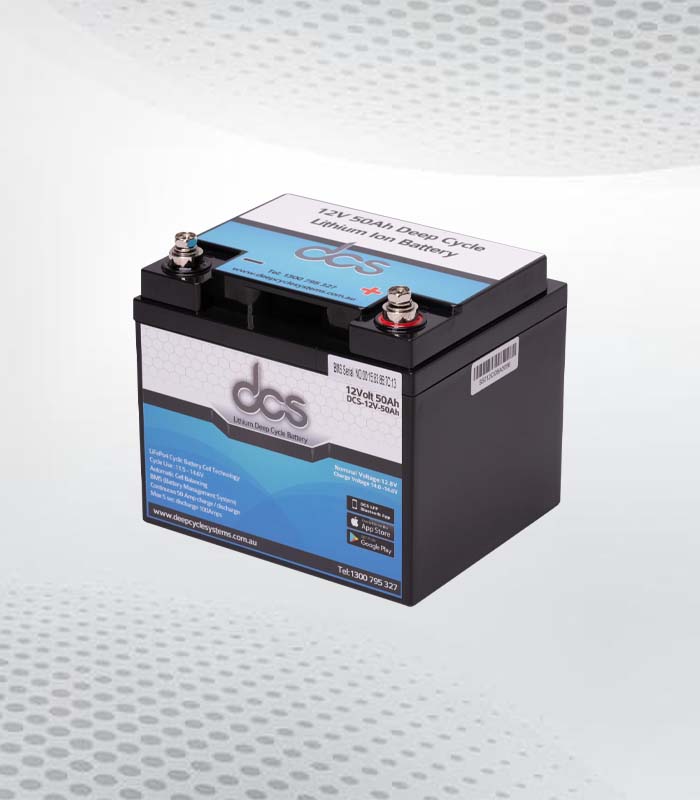According to the report by Expert Market Research (EMR), the global personal electronics market is poised to experience robust growth at a compound annual growth rate (CAGR) of 4.5% between 2024 and 2032. This expansion is driven by increasing consumer demand for advanced, portable, and multifunctional electronic devices, alongside a surge in technological innovations, such as the integration of artificial intelligence (AI), Internet of Things (IoT), and wearable technologies. The growing penetration of smart devices into daily life, combined with the rising disposable income levels in emerging economies, is anticipated to further propel the personal electronics market by 2032.
Personal electronics encompass a wide array of products, including smartphones, laptops, tablets, smartwatches, headphones, and other wearable devices. These gadgets have become essential for communication, entertainment, fitness tracking, and daily work routines. The shift towards digitalization and the increasing reliance on smart technologies, fueled by advancements in mobile connectivity such as 5G, are key contributors to the market’s growth.
Moreover, the evolving consumer preferences for sleek, portable, and aesthetically pleasing electronics have led manufacturers to continuously innovate and offer premium features, such as foldable screens, voice recognition, and enhanced battery life. As companies invest in research and development (R&D) to stay ahead of the competition, the market is expected to witness a surge in both product diversification and technological integration, enhancing the user experience.
Another critical factor driving the growth of the global personal electronics market is the burgeoning e-commerce sector, which provides consumers with easy access to a wide range of electronics. As online platforms expand and improve their logistics and payment systems, they make personal electronics more accessible, especially in developing regions where brick-and-mortar retail infrastructure may be lacking.
Get a Free Sample Report with Table of Contents: https://www.expertmarketresearch.com/reports/personal-electronics-market/requestsample
Key Drivers of Market Growth
The global personal electronics market is being driven by several key factors:
- Technological Advancements: Rapid innovations in AI, IoT, and other cutting-edge technologies are transforming personal electronics. Devices are becoming smarter and more intuitive, offering users a seamless experience across various applications.
- Rising Demand for Portable Devices: With consumers increasingly on the move, demand for portable and multifunctional devices like smartphones, tablets, and wearables continues to rise. The need for connectivity, communication, and convenience fuels the growth of portable electronics.
- Growing Adoption of Wearables: The popularity of wearables such as fitness trackers, smartwatches, and health-monitoring devices has skyrocketed, driven by the rising health-consciousness of consumers and the growing interest in fitness tracking and personal well-being.
- Increasing Disposable Incomes: As incomes rise, especially in emerging markets such as Asia Pacific and Latin America, consumers are more willing to spend on personal electronics that enhance their lifestyle and productivity.
- E-commerce Growth: The expansion of online retailing has made personal electronics more accessible. This trend is particularly noticeable in developing economies, where online platforms are filling the gap left by insufficient physical retail infrastructure.
Market Segmentation
The global personal electronics market can be segmented based on product type, distribution channel, and region.
Market Breakup by Product Type
- Smartphones: Dominating the market, smartphones continue to evolve with advanced features such as foldable screens, improved cameras, and longer battery life. The introduction of 5G is a key driver of demand in this category.
- Laptops and Tablets: The demand for laptops and tablets remains robust due to the rise of remote work, online education, and entertainment needs. Companies are introducing lighter, more powerful models with improved battery efficiency and higher resolution screens.
- Wearables: Smartwatches, fitness trackers, and health-monitoring devices have seen rapid adoption due to increasing consumer interest in health and fitness. Advanced features like ECG monitoring, sleep tracking, and stress management contribute to the growth in this segment.
- Audio Devices: Headphones, earbuds, and wireless speakers are witnessing substantial growth, driven by the rise in streaming services, gaming, and work-from-home trends.
- Other Personal Electronics: This category includes items such as smart home devices, cameras, and gaming consoles, which have seen increased demand due to the growing interest in smart homes and entertainment.
Market Breakup by Distribution Channel
- Online Stores: The proliferation of e-commerce platforms has dramatically changed the way personal electronics are sold. Consumers prefer the convenience of online shopping, where they can compare prices, read reviews, and have products delivered directly to their homes.
- Retail Stores: Despite the rise of e-commerce, physical retail stores remain important, particularly for consumers who want to experience products firsthand before purchasing. Many major retailers are enhancing their in-store experiences to compete with online platforms.
- Specialty Stores: These stores cater to niche markets, offering high-end personal electronics with specialized features, including premium headphones, gaming devices, and smartwatches.
Market Breakup by Region
The global personal electronics market spans several key regions, each contributing to the overall growth.
- North America: As one of the most developed markets, North America is characterized by high demand for premium electronics and early adoption of new technologies. The region continues to lead in innovation, especially in the wearable and smart home categories.
- Europe: Europe has a strong consumer base for personal electronics, driven by technological advancements and the increasing focus on sustainability. Countries like Germany, the UK, and France are major markets, particularly for smartphones, laptops, and wearables.
- Asia Pacific: This region is expected to experience the fastest growth, driven by rising disposable incomes, expanding urbanization, and a burgeoning middle class. Countries like China, India, and Japan are leading the charge in terms of both production and consumption of personal electronics.
- Latin America: Growing internet penetration and increasing smartphone usage are boosting the market in Latin America. Brazil and Mexico are key players, with demand for budget-friendly electronics driving market growth.
- Middle East and Africa: This region is experiencing steady growth as consumers increasingly adopt smartphones and other personal devices. Economic development and growing internet access are key factors contributing to the rising demand for electronics in this area.
Competitive Landscape
The global personal electronics market is highly competitive, with several leading players constantly innovating to capture market share. Companies are focusing on developing technologically advanced products to meet changing consumer demands and enhance user experience.
Some of the major players explored in the report by Expert Market Research include:
- Apple Inc.: As a dominant player in the personal electronics market, Apple continues to innovate with products like the iPhone, iPad, and Apple Watch. Its ecosystem approach, where devices integrate seamlessly with each other, remains a key competitive advantage.
- Samsung Electronics Co., Ltd.: Samsung is a major player in the global personal electronics market, offering a wide range of smartphones, tablets, laptops, and wearables. The company’s innovative features and strong presence in the Android ecosystem drive its market success.
- Sony Corporation: Known for its high-quality audio devices, cameras, and gaming consoles, Sony remains a leading player in the personal electronics market. Its PlayStation brand, in particular, continues to enjoy widespread popularity.
- Xiaomi Corporation: Xiaomi has gained a strong foothold in the market by offering high-quality, affordable smartphones, wearables, and smart home devices. Its focus on affordability without compromising on features makes it a popular choice in emerging markets.
- Huawei Technologies Co., Ltd.: Despite challenges in the global market, Huawei remains a significant player, especially in the smartphone and wearable segments. The company’s R&D investments in 5G and AI have allowed it to stay competitive.
- Bose Corporation: A leader in the premium audio devices segment, Bose continues to innovate in the field of noise-canceling headphones and wireless speakers, offering superior sound quality and cutting-edge features.
- Fitbit, Inc.: Specializing in fitness trackers and smartwatches, Fitbit has become synonymous with health-focused wearable technology. The company’s acquisition by Google has further bolstered its market position.
Explore Trending Reports:
Australia Cheese Market: https://www.expertmarketresearch.com/reports/australia-cheese-market
United Kingdom Wires and Cables Market: https://www.expertmarketresearch.com/reports/united-kingdom-wires-and-cables-market
Chile Juice Market: https://www.expertmarketresearch.com/reports/chile-juice-market
Future Trends and Opportunities
The global personal electronics market is expected to undergo significant transformations in the coming years, driven by several trends and emerging opportunities:
- AI and Machine Learning Integration: Devices are becoming smarter, with AI and machine learning enabling personalized experiences. From virtual assistants to health-monitoring features, AI will continue to shape the future of personal electronics.
- Sustainability and Eco-Friendly Products: Consumers are becoming more conscious of the environmental impact of their purchases, pushing companies to adopt sustainable practices. The demand for eco-friendly materials and energy-efficient products is expected to grow.
- Health and Wellness Focus: As health-consciousness rises, personal electronics with health-monitoring features, such as heart rate monitoring, sleep tracking, and stress management, are expected to gain more traction. Wearables and smartwatches will play a crucial role in this trend.
- 5G and Connectivity: The rollout of 5G networks worldwide will revolutionize personal electronics by offering faster and more reliable connectivity. This will lead to the development of more powerful devices capable of handling complex tasks, such as real-time data analysis and cloud computing.
- Augmented Reality (AR) and Virtual Reality (VR): AR and VR are gaining ground in personal electronics, especially in gaming, entertainment, and education sectors. Devices that integrate these technologies are expected to see increased demand in the coming years.
The global personal electronics market is set for strong growth over the next decade, driven by technological advancements, rising consumer demand for smart and portable devices, and the increasing penetration of the internet and e-commerce. As companies continue to innovate and cater to evolving consumer needs, the market will see further diversification and expansion, with new opportunities emerging in areas such as health, AI integration, and sustainability. The competition among leading players will intensify as they strive to offer cutting-edge products and capture a larger share of the growing market.




